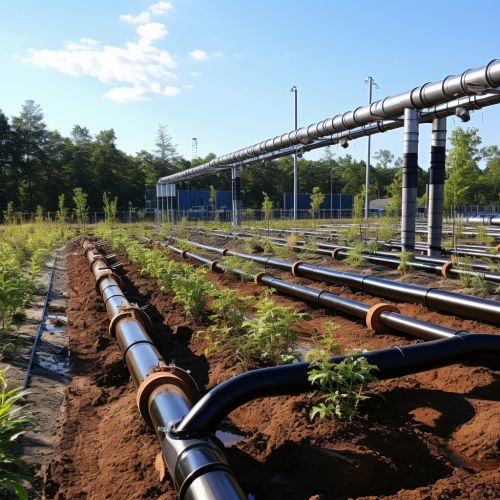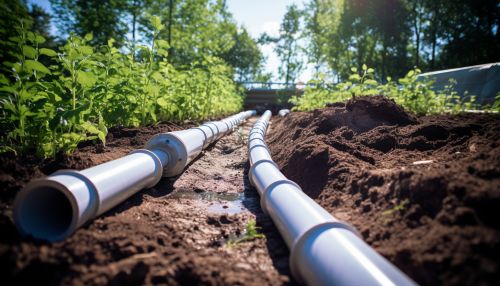Bioventing
Introduction
Bioventing is an in-situ remediation technology that stimulates the natural in-place bacteria to degrade organic contaminants, primarily petroleum hydrocarbons. It is an innovative technology that uses the indigenous soil microorganisms and their biodegradation capabilities.


Process
Bioventing involves the stimulation of the natural in-situ microbial populations present in soils. This is achieved by providing oxygen to existing soil microorganisms, thereby enhancing their ability to degrade organic contaminants. The process involves the injection of air below the water table into the contaminated soil. The air can be injected either intermittently or continuously, depending on the specific requirements of the site and the nature of the contamination.
Mechanism
The fundamental principle behind bioventing is the enhancement of aerobic biodegradation processes. In the presence of oxygen, the indigenous microorganisms metabolize the organic contaminants, converting them into harmless by-products such as carbon dioxide, water, and microbial biomass. The process of bioventing is based on the metabolic activities of these microorganisms.
Application
Bioventing is primarily used for the remediation of petroleum-contaminated soils. It is particularly effective for the treatment of soils contaminated with lighter petroleum products such as gasoline, diesel, and jet fuels. However, it can also be used for soils contaminated with certain types of solvents and pesticides.
Advantages
Bioventing offers several advantages over traditional soil remediation techniques. It is a cost-effective method as it requires less energy and resources compared to other techniques. It is also a sustainable method as it uses the natural biodegradation processes for remediation. Furthermore, it does not require the excavation and removal of contaminated soil, thereby minimizing the disruption to the site.
Limitations
Despite its advantages, bioventing also has certain limitations. It is not effective for the treatment of soils contaminated with heavy petroleum products or certain types of chlorinated solvents. The process is also dependent on the presence of certain environmental conditions such as temperature, moisture, and nutrient levels. In addition, the success of bioventing is highly dependent on the nature and concentration of the contaminants, as well as the characteristics of the soil.
Research and Development
Research in the field of bioventing is ongoing, with scientists continuously exploring ways to enhance the efficiency and applicability of this technology. Current research focuses on understanding the factors that influence the biodegradation processes, developing methods to enhance the bioavailability of contaminants, and exploring the potential of using bioventing for the treatment of other types of contaminants.
